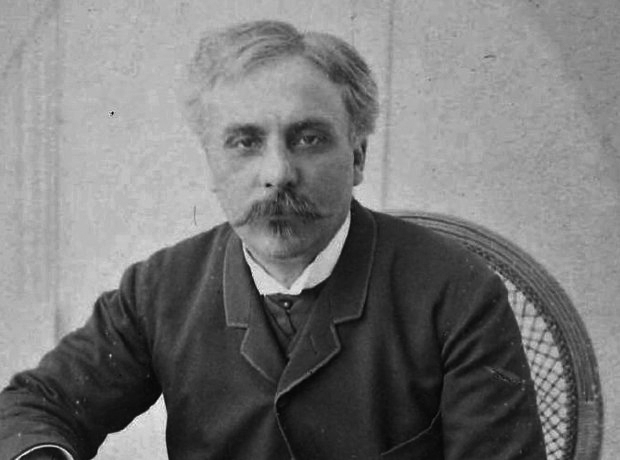DOLLY, FOR PIANO, FOUR-HANDS, OP. 56
Gabriel Fauré
(b. Pamiers, Ariège, France, May 12, 1845; d. Paris, November 4, 1924)
Composed 1893-6; 16 minutes
 Fauré wrote his Dolly suite over three years, each movement being a gift for a young girl, Dolly Bardac. She was the daughter of singer Emma Bardac, who had recently given the première of Fauré’s song cycle La bonne chanson, and had an intense relationship with the composer. The lyrical, song-like Berceuse was the first piece Fauré wrote for Dolly, in 1893, and was his first piece for piano for almost two decades. Messieu Aoul! was the nickname for Monsieur Raoul, Dolly’s young brother, portrayed here in a whimsical waltz given to Dolly on her birthday in 1894. Another valse-caprice, Ketty valse, was a birthday gift two years later. Its title refers to Raoul’s pet dog Ketty. In between these two delightfully ingenuous waltzes comes Fauré’s 1895 gift,
Fauré wrote his Dolly suite over three years, each movement being a gift for a young girl, Dolly Bardac. She was the daughter of singer Emma Bardac, who had recently given the première of Fauré’s song cycle La bonne chanson, and had an intense relationship with the composer. The lyrical, song-like Berceuse was the first piece Fauré wrote for Dolly, in 1893, and was his first piece for piano for almost two decades. Messieu Aoul! was the nickname for Monsieur Raoul, Dolly’s young brother, portrayed here in a whimsical waltz given to Dolly on her birthday in 1894. Another valse-caprice, Ketty valse, was a birthday gift two years later. Its title refers to Raoul’s pet dog Ketty. In between these two delightfully ingenuous waltzes comes Fauré’s 1895 gift,
Le jardin de Dolly, a delicately drawn picture of an enchanted garden. Both Le Jardin and Tendresse roam harmonically far and wide, in a gentle nocturnal mood. Le pas espagnole reflects the prevailing vogue for the sounds of Spain, here via an equestrian bronze by Fauré’s father-in-law, sculptor Emmanuel Frémiet, which stood in Dolly’s house and was a clear favorite of the young girl.
